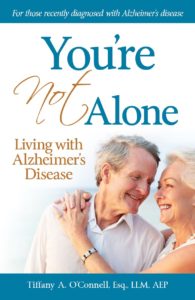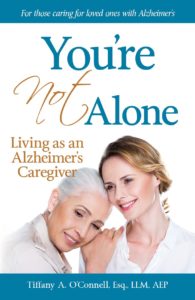June 2020
 |
 |
|
|
Revocable living trusts are among the most powerful tools in the estate planner’s toolbox. They are also widely misunderstood. Let’s begin by looking at two of the main benefits of revocable living trusts, then we’ll explore some of the more common myths surrounding them.
A revocable living trust allows the person creating the trust (the grantor) to remain in control of property in the trust until he or she passes away. After the grantor’s death, property in the revocable living trust is controlled by the successor trustee, who was chosen by the grantor. The successor trustee then distributes trust property according to the wishes of the grantor.
|
|
|
One of the primary benefits of a revocable living trust is that it enables assets held in the trust to avoid probate after the grantor’s death. This allows trust assets to be distributed to heirs quickly. The costs associated with probating the estate are also avoided. In addition, a revocable living trust protects the privacy of the grantor (and beneficiaries) because the trust’s provisions are confidential. A last will and testament, on the other hand, is a matter of public record. Anyone can access information about the grantor’s assets, creditors, debts, and more.
|
|
|
|
|
Now let’s look at some of the myths surrounding revocable living trusts.
MYTH: Revocable living trusts are only for "rich" people
While it is true that wealthy people often create trusts, many families of modest means use revocable living trusts to accomplish goals like those mentioned above.
MYTH: Grantors cannot access assets held in a revocable living trust, thereby losing control over them
The grantor can make assets held in a revocable living trust as accessible as he or she wishes. The trust can be designed to provide the grantor with complete access to trust assets until he or she passes away.
Conversely, the grantor can prevent people of his or her choosing from accessing trust property—even after death. For example, if the grantor believes that a certain heir is not mature enough to manage an inheritance, the grantor can stipulate how, when, and under what circumstances distributions from the trust are made to the heir.
MYTH: Revocable living trusts ensure that the grantor’s entire estate will avoid probate
While assets held in the revocable living trust avoid probate, assets not held in the trust still have to go through the probate process if there is no beneficiary. (Placing property inside a trust is called "funding" the trust.) If the grantor wants certain assets (that can't name beneficiaries) to avoid probate, these assets must be placed in the trust. Many people fail to fund their revocable living trusts properly and lose one of the main benefits of trusts—probate avoidance.
MYTH: Revocable living trusts offer protection against creditors
A revocable living trust does not provide protection from creditors during the grantor’s lifetime. If the grantor adds a "spendthrift" provision to the revocable living trust, it will become what is known as a spendthrift trust upon the grantor’s death. A spendthrift trust can protect trust assets from an heir’s creditors. After a distribution from the trust is made to an heir, however, the money from that distribution is available to creditors.
MYTH: Revocable living trusts are expensive
Creating a revocable living trust will initially cost more than creating a last will and testament. However, in the long run, probate avoidance and other trust benefits can make up for the initial expense.
|
|
|
One of the first questions many clients ask is whether or not they need a trust. While this article provides an introduction to what a revocable living trust can and cannot do, the final decision depends on your unique needs and goals. |
|
|
|
|
How the CARES Act Impacts Retirement,
Tax, and Estate Planning |
 |
|
|
The Coronavirus Aid, Relief, and Economic Security Act (CARES Act) was designed to provide financial relief for American businesses, hospitals, and individuals. It includes changes to the law that impact retirement, tax, and estate planning. Here are several changes you should know about. |
|
|
Required Minimum Distributions (RMDs)
RMDs from IRAs, 401(k)s, 403(b)s and other retirement accounts have been suspended for 2020. The waiver includes RMDs for individuals aged 70½ who would have been required to take their first RMD by April 1, 2020. The waiver also includes RMDs from inherited IRAs for 2020. In conjunction with the SECURE Act, which was signed into law late last year, this change has effectively pushed the initial RMD back several years for those who turn 70½ in 2020.
Of course, people who need to withdraw money from their retirement accounts can still do so, but the withdrawal will be taxed as in years past. Also, people can continue to use some or all of their RMD from an IRA to make contributions to charity as a qualified charitable distribution (QCD). The amount of the QCD will be excluded from income like it was before the CARES Act.
What if you have already taken your RMD for 2020… can you put it back into your account? Things get a little tricky (perhaps even illogical) here. You can return the funds to your account by July 15, but only if both of the following apply:
- The distribution came from a retirement account to which you made contributions OR an IRA inherited from your spouse
- You took the distribution after January 31st
Retirement Account Distributions
People under age 59½ can now withdraw up to $100,000 from retirement accounts such as a 401(k)s or IRAs without having to pay a 10% penalty. However, to qualify for this option you must meet one of the following two requirements:
- You, your spouse or a dependent has been diagnosed with COVID-19
- You have suffered financially due to the pandemic. This might include a loss of income from being quarantined, furloughed, or having your hours reduced. Being unable to work due to childcare issues or other factors beyond your control could also make you eligible
The 10% penalty waiver is retroactive to January 1, 2020, so if you took a distribution from your retirement plan earlier this year and it was subject to penalty, that distribution will now qualify for the waiver. As for tax liability on the distribution: it can be spread out over the next three years. You can also put the money back into the account over the next three years to avoid some or all of the taxes on it.
401(k) Loans
The CARES Act doubles the maximum amount that can be borrowed from a 401(k). You can now borrow up to 100% of your vested account balance or $100,000, whichever is less. In addition, if an outstanding loan balance from your plan is supposed to be repaid between March 27, 2020, and December 31, 2020, you can extend the repayment period for one year. It is important to note that not all retirement plans allow for participant loans.
Tax Filing Deadline Extension
The Internal Revenue Service has extended the filing deadline for 2019 income tax returns to July 15,2020.
|
|
|
Upcoming Webinars |
 |
Introduction to Trusts and Estates
Thursday, July 9 10:00 AM - 11:00 AM
Tuesday, July 21 10:00 AM - 11:00 AM
Register today to reserve your spot for this webinar.
Additionally, registration for this event is critical so that we can contact you if it is prudent to cancel this session or if we need to change how we are able to offer this to you.
|
| Register Now |
|
|
A Personal Note From Tiffany
|
 |
|
|
|
As I write this, I am preparing for a presentation before my colleagues at the Boston Estate Planning Council. I'll be leading a discussion about how we, as trusted advisors, can support those diagnosed with Alzheimer's or dementia. So many of us struggle with how to support and help those having to travel this uncertain and stressful road. Although there are no clear-cut answers and solutions, I firmly believe that doing nothing is not an option.
Be willing to be vulnerable. Answers are not always in the textbooks. An answer may be in being willing to reach out, say hi, and ask how someone is doing…and then listen to them.
As always, thank you for taking the time to read and reflect.
Sending you all a remote hug,
|
|
|
Order Our Complimentary Books
|
|
|
 |
|
You're Not Alone — Living with Alzheimer's Disease
Order Here |
|
 |
|
You're Not Alone — Living as an Alzheimer's Caregiver
Order Here |
|
|
Or Call Us at 508-202-1818
|
|
|
 |
|
|